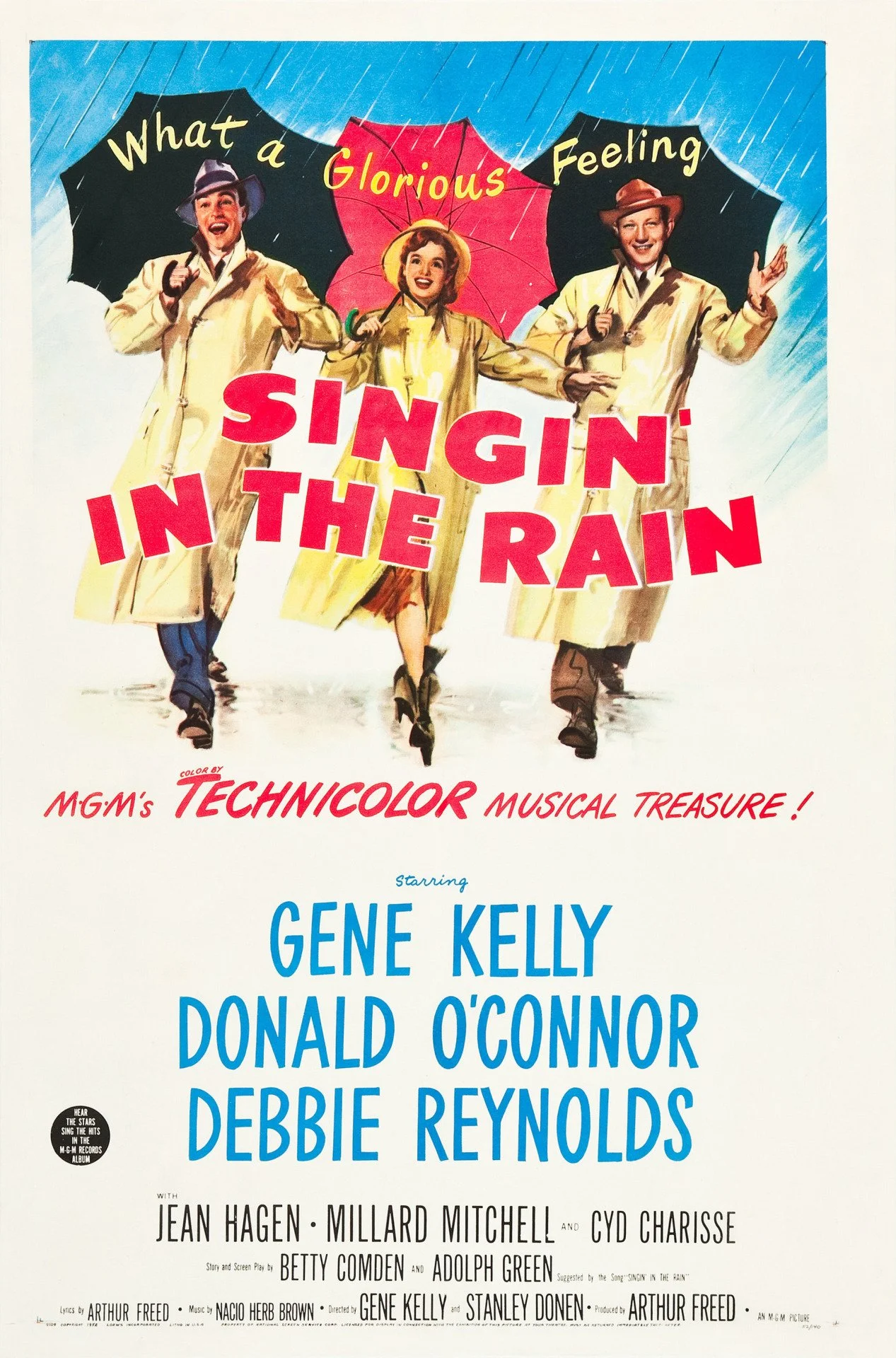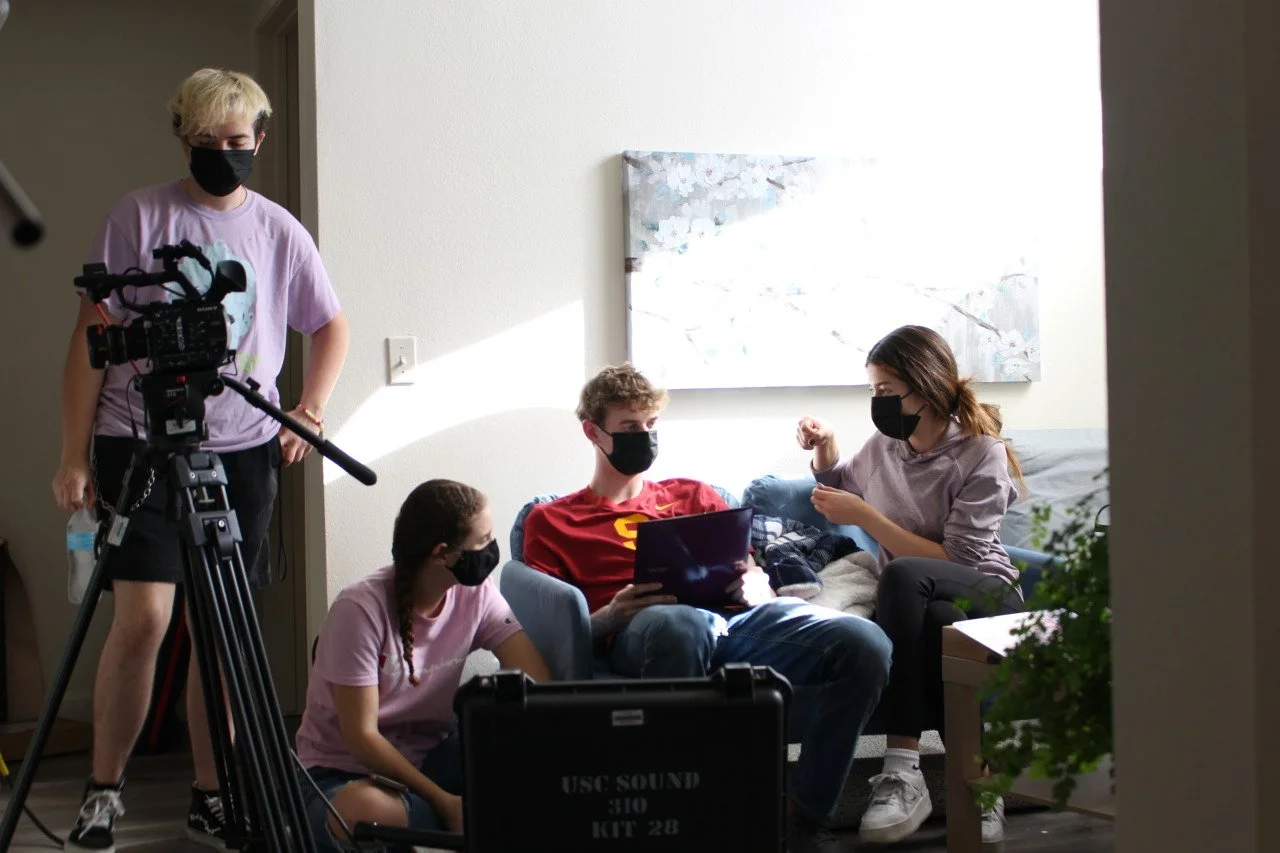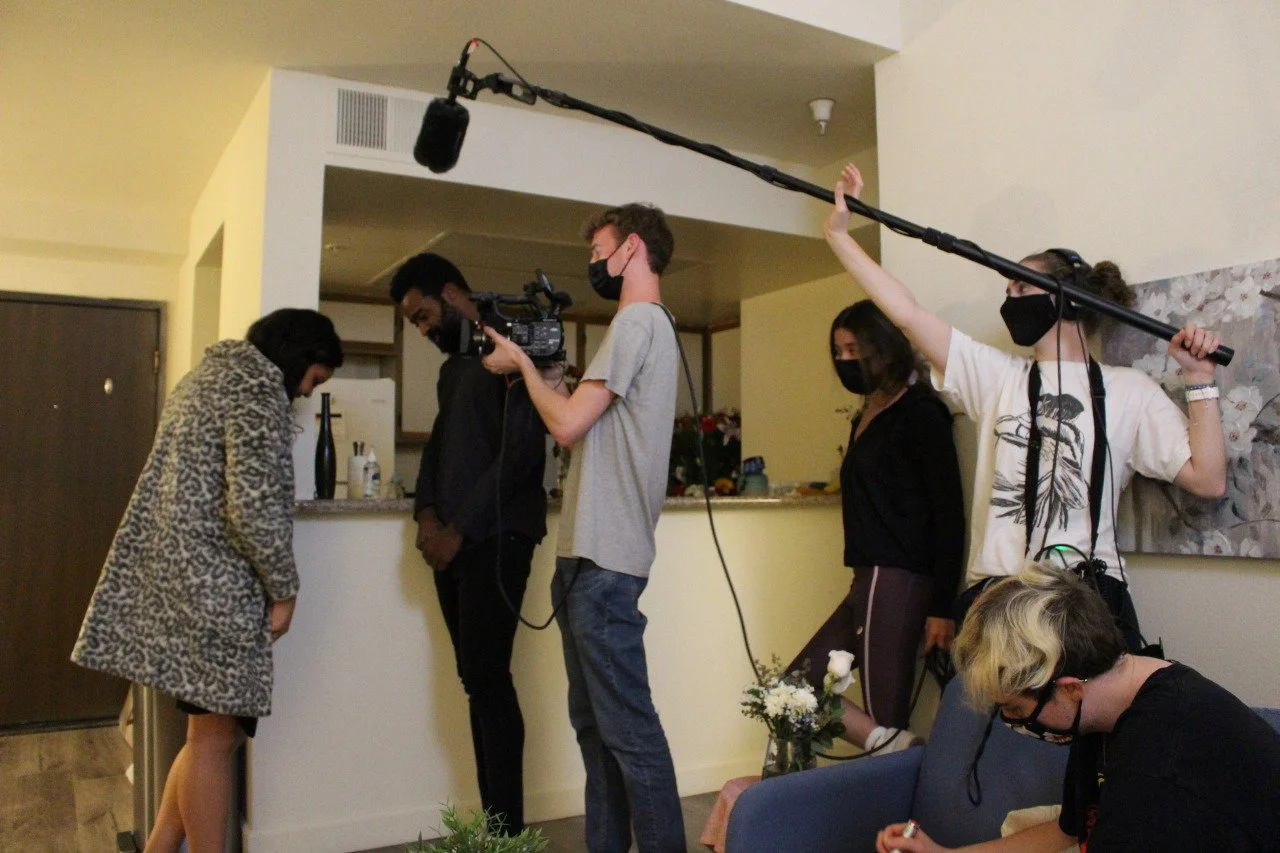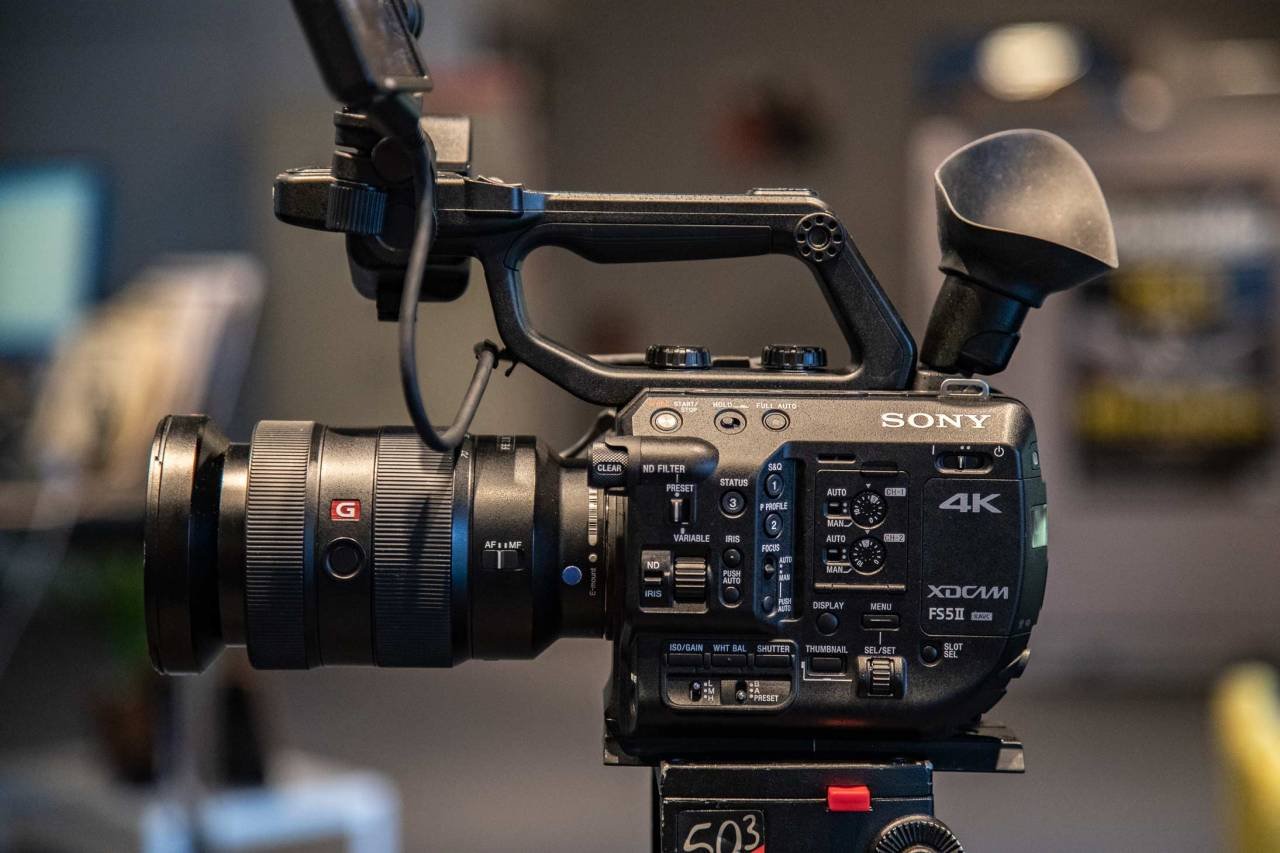Day in the Life of a Film Production Major
By: Nancy Aguilar ‘22
I transferred into the School of Cinematic Arts during the COVID-19 pandemic lockdown in January. Fall 2021 has been my first in-person experience at taking film production classes and I had no idea what I was getting into, but in hindsight that was probably for the better. I’m currently taking a Junior level course, the notorious CTPR310.
Weighing a whopping 6-credits, this class is not something you want to take with a heavy schedule, largely because of how much out of class time is required.
I’m a double major—I’m also majoring in International Relations and Global Business under Dornsife—so I only have space for two film classes this semester: CTPR310 and CTCS393. CTCS is a 4 unit class about Post-War Hollywood Cinema.
CTCS393 has a format that is similar to CTCS190 and CTCS466, which are film classes that are open to all majors on campus.
CTCS190 is an introduction to cinema class where you watch many classic films, ranging from Singin’ in the Rain (1952) to Silver Linings Playbook (2012). Each week you watch a new film with some attached readings and you may or may not take weekly quizzes on the material. CTCS466 is the same thing but for new releases of films, this class is also extra special because the cast and crew is invited as guest speakers after each weekly screening! For CTCS393, it’s a similar thing but all of the films take place between roughly 1946-1962.
For all of these CTCS classes, we have about three papers through the semester in place of exams, but this varies by year/professor.
Now to talk about CTPR310 in more clarity. The main premise of this course is to give students the opportunity to each take on every role in a production. The way this works is that we are put in groups of three and rotate through the responsibilities. I’m attaching some pictures of my trio on set this semester.
The first role I had was producer and sound designer. As producer you handle almost everything that has to do with pre-production. For example, you fill out film location permits, actor release forms, volunteer release forms, budgeting, scheduling—and with COVID-19—the new task of making sure that everyone is vaccinated and tested negatively is added. You’re very much launched into the responsibility and it’s very hand on so you have to do all the contacting and figuring out work-arounds on your own. It’s a very daunting role to get into and this is why I was happy that I wasn’t sure what I was getting into because I probably would’ve dreaded the experience. As producer you’re the center of communication for the whole crew and everyone keeps in contact with you for everything. Anything from scheduling conflicts to allergies and food preferences. On set, you are also in charge of recording sound as the boom operator. This is pretty straight forward but it is a tedious task to do while simultaneously taking on your producing duties like getting lunch or making sure everything is on schedule.
The second role I had was as cinematographer and picture editor. For this role, you have to study how the camera works and figure out the lighting equipment so that you can figure out what kind of look you want for the shoot. Of course this is a very collaborative thing because the director is central to making lots of those decisions and the equipment is moved around by everyone since there’s so much of it. On set, the cinematographer is in charge of making sure that all the footage is in focus and lit properly. Those are the essentials. In post-production, you take on the role as picture editor and you’re in charge of putting together all of the footage. This is also a very complicated job, especially because you’re still getting used to using the camera functions and how the editing software works.
The final role—which I am currently working on—is directing and writing. For this role, you’re in charge of overseeing everything essentially and your two team members look to you to make sure that everything is going as you envisioned. In pre-production you’re keeping in touch with the producer for casting, locations, props, etc., during production you’re leading the shot framing and deciding when you’ve gotten all of the coverage that you need for a certain scene. In post-production you regularly check in with your picture and sound editors to make sure that you’re on the same page for how you want the story to unfold. As a writer, you start writing the script that you want to use for 310 in the previous semester for a class called CTWR413. And you keep working on it and revising it up until the first shooting day and maybe even then.
I have this class on Tuesdays and Thursdays, and we have some full class discussions but most of the time consists of little breakout sessions for your specific role and students that have that role as well. Since there’s three members per group, or trio, we make three films each semester and screen them every five weeks. It’s an insane schedule but it’s extremely fun. You collaborate with your classmates in a way that you don’t get to in traditional school and it’s convinced me that collaborative work should be incorporated more and more into any curriculum. Learning how to work with others is an invaluable skill that really rewards you in the long run.
All of this producing, editing and directing work is done outside of the regular class time so how heavy your schedule is depends on how well you plan for it. Despite it not being easy by any means, it’s definitely doable. Another big time consumer is the actual shooting days. You spend a total of six weekends on set for all three projects which is another layer of time commitment for this class.
One of the worst aspects of this course is just transporting the equipment everywhere [That’s a picture of the actual camera we use in class]. I highly urge everyone who takes this course to invest in a little cart to carry everything or set aside money for a chiropractor or spine insurance. Honestly not just for the course but for the film production profession in general.
It’s a really demanding and work-heavy major to take on but it’s all worth it to see the work you’ve created with a team. If you’re curious to see how a screening looks or works, we are having our P3 screening December 12th at the Norris Theater here on campus. It’s open to anyone as long as you present a vaccine card or negative COVID test at the door. This is just a brief overview of my personal experience but there is so much more out there. If you have any more questions about being a production major or what this entails you can contact me at @nancyeagler on Instagram. I’m happy to answer any questions. :)
Want more from Trojans 360?
Visit Trojans 360 on Facebook & Twitter to stay up to date with more student content! You can also Ask A Trojan an anonymous question, and we’ll try to answer it in a future post. And don’t forget to follow us on Instagram!
Trojans 360 is USC’s official student-run blog. Content created by students, for students.







